Pbeemai ປີໃໝ່
Tuesday, April 17, 2012
- Silkroad
Already after half a day I was standing on the border to Laos. At the customs officials demanded $ 2 on both sides. At first, I considered refusing to do so. In my eyes, that's corruption. But the officials did not let up. I will avoid this border crossing in the future. Even if he is the only one between Laos and Cambodia. After crossing the border, I noticed on my rear wheel that the tire had a crack.

But the damage did not seem to me too fatal. Just drive on and wait, was my motto. Laos was never really flat on my first visit. Constantly it went up and down and in quite a heat. Even the water buffaloes sought a mud hole to cool off. I too fled into the shadows. After two days I arrived in Pakse.

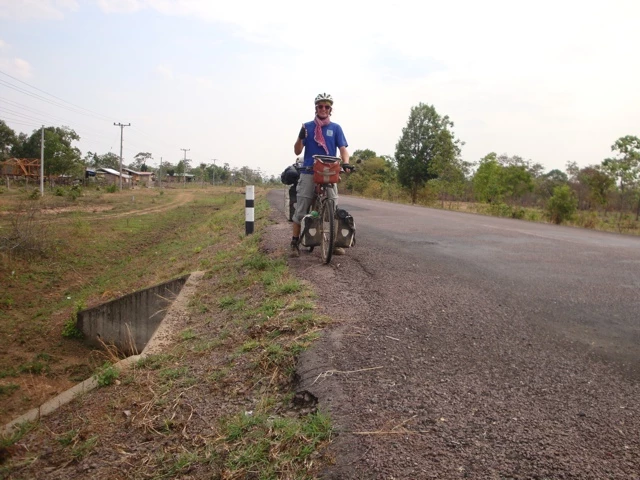
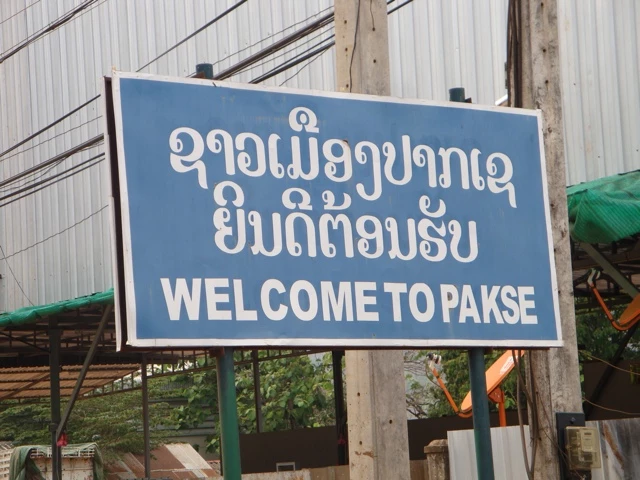
There it was planned to repair the rear tire, clean my cassette and relax for three days. Since the disappearance of Cédric at the Gasherbrum 1 I tried to follow the events and hoped for a happy ending. The second search flight on March 31 unfortunately ended unsuccessfully. I would like to extend my heartfelt condolences to Ursula, Charly and the whole Hometeam expeditionsnews.ch.
On the morning of the first day my mother answered. She had learned about my fall in Phnom Penh and therefore decided to visit me spontaneously in Laos. That is true motherly love! So I shortened my stay to two days. Within 20 minutes, I was able to remodel my visa for a month at the Vietnamese Consulate in Pakse. Vietnam has definitely topped Tajikistan from first place on my "Top Ten Message List".
When cleaning the cassette it turned out that several teeth had already broken off three wreaths. That explained my problem with the circuit. I deposited a replacement cassette with the Nomadbikefamily in Hanoi. Until then I have to settle for nine courses. For the repair of the rear tire was all the more successful. The team from the Veloplus Shop in Wetzikon had given the "Zahnseidetrick" during my preparations for the journey. With a strong needle, floss and combi pliers, you simply sew the torn spot together again. From the inside, I taped the place with a tire patch I got from Tom. Improvisation is half the life!
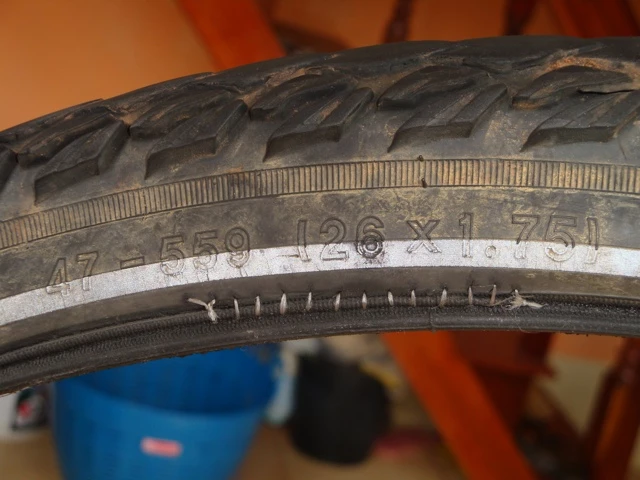
After this emergency operation I was able to continue the next day to Tha Khaek. Gaëtan and Solenne from France came to meet me after driving about 60 kilometers. During the winter months, they work in gastronomy and travel throughout the summer. This time, they spontaneously decided to buy two bicycles in Bangkok and travel through Thailand and Laos until the end of May. I changed my remaining Riels from Cambodia to a Coke.
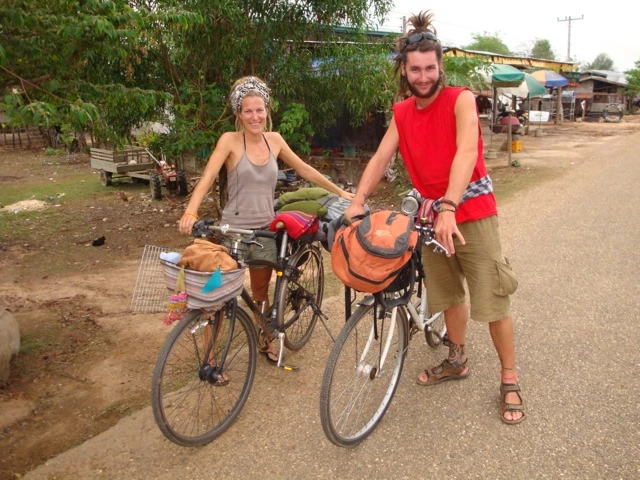
After this short pit stop I drove on. On the second day I first experienced a beautiful sunrise. But already around noon the sky darkened and just when I wanted to hold siesta, it started to rain. Luckily I could just throw my tarp over me. After about an hour, the rainstorm calmed down very briefly. Unfortunately, he stopped for a long time, so I had to look for a dry place for my tent.
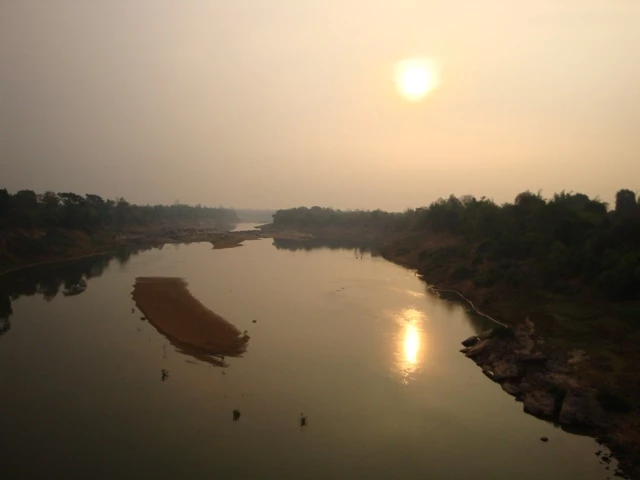
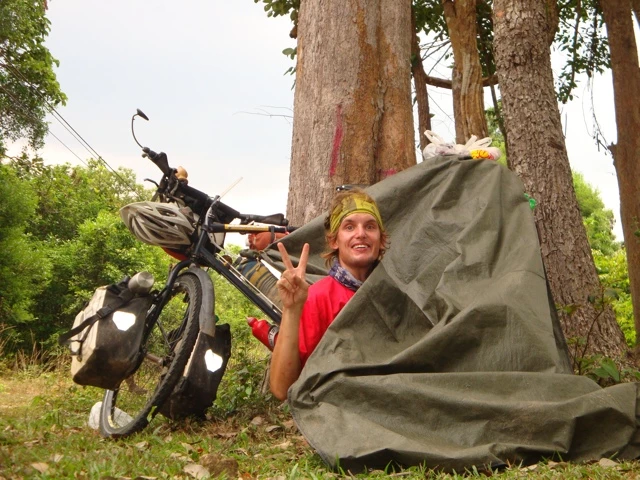
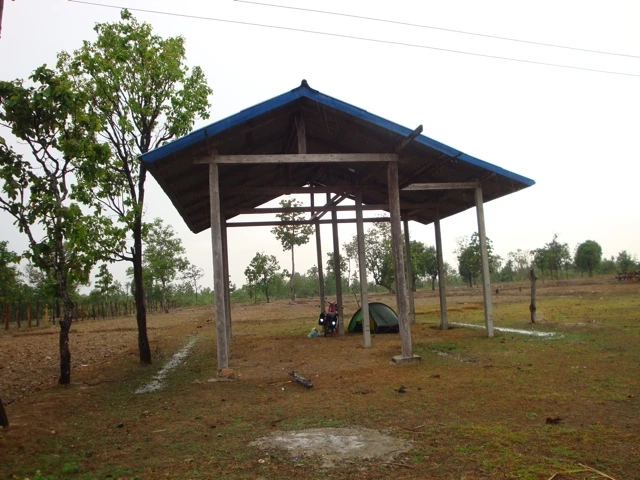
The remaining 120 kilometers to Tha Khaek were soon overcome by the motivation to see my mother again soon. At the Tha Khaek Travel Lodge I found a wonderful guesthouse. There I was able to deposit Kurd (my bike) and most of my luggage to take the bus to Vientiane.
I was pretty exhausted from the six-hour drive. Somehow the freedom on two wheels is much nicer. When my mother finally landed in Vientiane after 25 hours, I felt a bit ridiculous with my bus ride. The reunion was beautiful.
Already the next day we booked two bus tickets for 160'000 kip (8'000kip = 1 $) to Luang Prabang for the following day and then visited the temple museum Wat Si Saket. Wat Si Saket was founded in 1818 by King Anouvong (ruled from 1805 to 1828). In 1827 he sent his army against Siam, was defeated and Vientiane largely destroyed in the episode. Only a few buildings were spared, including Wat Si Saket, possibly because the architecture was more Siamese rather than Lao-style.
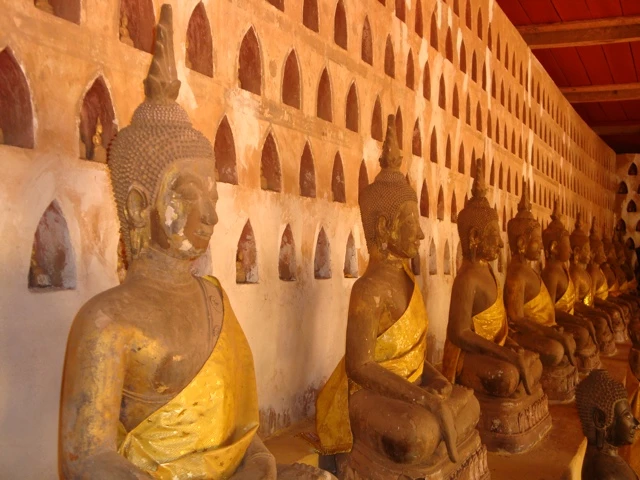
This visit made me forget the visit to the Chinese Embassy. In the morning, I wanted to apply for my visa to return to China. The staff at the counter told me that since January 1, 2012 new rules apply so all tourists have to present all bus, flight and train tickets, as well as hotel reservations to apply for a visa. What a nonsense!
I want to first think about Vietnam, if I should visit this communist idiot once again. The culinary gifts of my mother and the delicious pizza set off with me a real high. Velonomades can make you happy with the smallest things.


The official title Laos is "Democratic People's Republic", in English short form P.D.R. called. Tourists call it a Please Do not Rush. The exact meaning we experienced the next day on the bus trip to Luang Prabang. Actually, the ride through the mountains should take 9-10 hours. However, a broken tire just before arrival made us arrive after 12 hours.

The relaxing night in the new hotel let us recover from the hardships.
Luang Prabang's urban history is inextricably linked to the genesis of Laos. 1365 is commonly referred to as the founding year of Lan Chang (the land of millions of elephants) under Fa Ngum. The last Lao king, Sisavang Vatthana, who resided in Luang Prabang until 1975, was deported to a political re-education center with his wife and Crown Prince. There, the royal family - presumably 1984 - from previously unclear circumstances killed.
On the way to the first temple visit, a procession of elephants passed us.

First, we wanted to visit the temple Wat Xieng Thong, built in 1560 under King Setthathirath and restored in 1960-1962. As the only temple of the city he survived the plunder of 1887 intact. The architectural style with the almost reaching to the ground roof is typical of northern Laos. In 1995, Luang Prabang was declared a UNESCO World Heritage Site. 32 Buddhist monasteries and the entire French colonial architecture in the city have been listed and restored since then. Especially the murals were very impressive.

My Chinese hiking boots have given up the ghost. Fortunately, we soon found suitable replacement. My mother also had pups on her feet and needed a few patches. Since you have to take off your shoes before entering a temple, that was not very pleasant for them.
After our foot therapy, we visited the That Makmo (watermelon stupa), located on the grounds of Vat Visounarath. The name derives from its semicircular top. Donated by Phantin Xieng, wife of King Visounarath, in 1504, the stupa was rebuilt in 1932, with the precious grave goods being transferred to the Royal Palace.
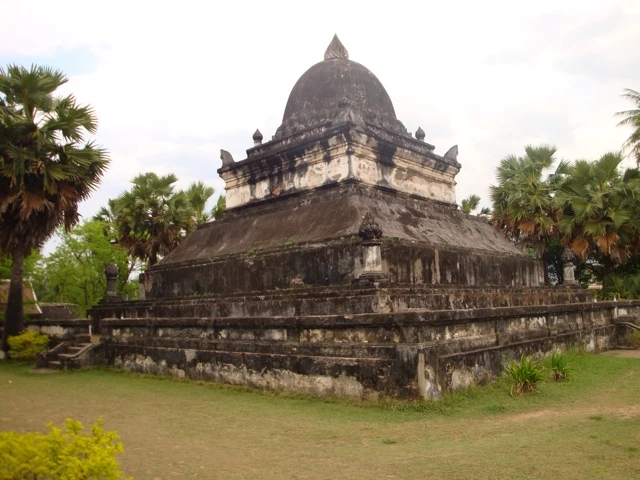
At the night market, we not only admired the craftsmanship but also the many exotic fruits. Most impressive for me are the Jack Fruits, which grow on the trunk of the tree and reach the size of a watermelon until maturity. Your flesh tastes heavenly.

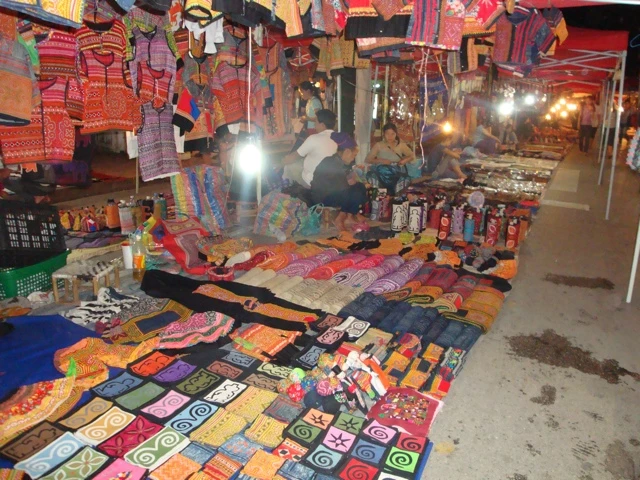
Due to the heat we were pretty tired in the evening. Especially the tropical climate is hard to bear as Falang (Lao for foreigners). The next day we took the ferry to the other side of the river and visited three smaller temples.

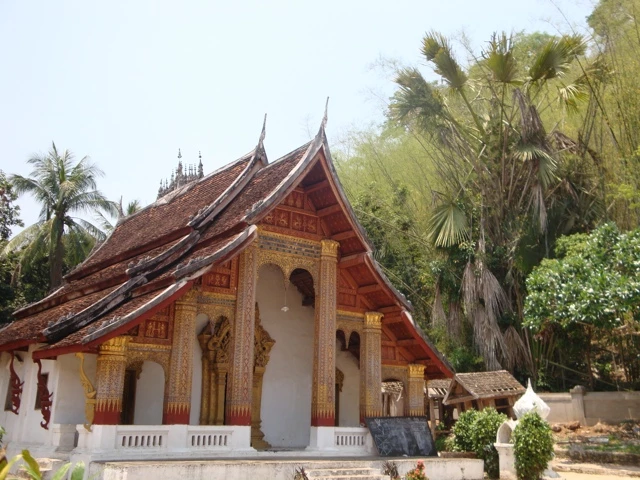
To escape the heat we visited, back in the old town, the National Museum. The former royal palace has been restored and made accessible to the public. Especially the throne room was very impressive. Unfortunately, photography is prohibited. However, the hall for the Pha Bang Buddha provided an impressive exterior.


First, the next morning, we went up the Mekong River by a wooden boat to visit the Pak Ou limestone caves - right on the banks of the Mekong, about 25 kilometers north of Luang Prabang. Only the trip with this strange, rickety ship was an experience in itself.
The caves are one of the most important Buddhist pilgrimage sites in Laos. These are two cave temples with breathtaking views, which are located at the mouth of Nam Ou in the Mekong. Here, during the Indo-China war, private Buddha statues of the population were brought to safety from looting. At times, more than 5,000 statues are said to have stood in the two cave temples. Hundreds of them, in various sizes, can still be visited today in the two caves, they were also brought here as offerings by pilgrims.
According to legend, the two caves have been used as a temple since 1547. The entire facility is also called Tham Ting ("Ting Cave"). In the lower cave, Tham Loum, in addition to numerous up to one meter large Buddha statues made of wood, bronze, iron or clay, a water hole for the ritual purification of the statues can be seen.
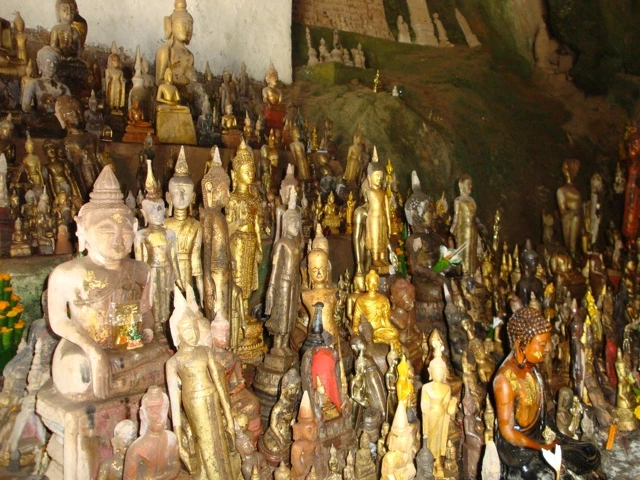

Back in Luang Prabang, the New Year was already in full swing. The New Year Festival (Pbeemai) is based on the Lao lunar calendar and usually takes place in mid-April. There will be a big water fight during 4 days. If you think he would stay dry during this time, you better aim for another destination.
Due to the great heat, the whole thing was a lot of fun. The locals drove in huge parades through the city. Of course always with water tanks on the vehicle to fight against the attackers. Sometimes we have almost no chance with our PET bottles. Completely soaked we waddled back to the hotel. This was definitely the best New Year celebration I have ever experienced and already the third on my trip (international, chinese and laotian new year). Happy Lao New Year!

If you visit Luang Prabang you should not miss the monks' morning alms ceremony. At half past five the next morning, we stood ready to watch the procession. People kneel in the street and give the monks food for their only meal a day. Since there are 32 temples in the city, all inhabited by monks, the train consists of a long orange column. An impressive picture. The monks, in turn, hand over a portion of their beggar bowls to the poor people, who walk with baskets beside them.
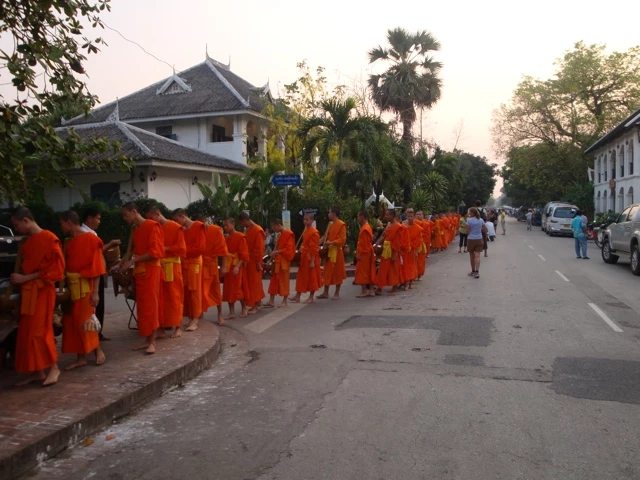
Unfortunately we had to say goodbye to Luang Prabang after this ceremony. This time our bus had an engine failure on the way back, but luckily it could be fixed. So we were back after 12 hours in the capital Vientiane. Of course we did not arrive dry at the hotel. Pbeemai! On our last day together we first visited the Pha That Luang. This landmark is a large 16th-century Buddhist stupa.
Legend has it that a Sanctuary of the Mon was originally located here. Other legends report that emissaries of King Ashoka in about 307 BC. Brought a relic of the Buddha here. Another legend claims that two Nagas have resided here. When King Sai Setthathirath I moved his capital from Luang Prabang to Vientiane, he is said to have commissioned the construction of a stupa on the ruins of a Khmer temple from the 13th century. The stupa was inaugurated in 1566 under the name "Loka-Chulamani" by the king. In each of the four directions a temple was built, of which today only the Wat That Luang Nuea (the residence of the Supreme Patriarch of the Lao Sangha) in the north and Wat That Luang Tai in the south of That Luang exist.
By the New Year festivities the plant was freely accessible. The believers ran with buckets of flower water past the Buddha figures and sprayed them. The midday sun made the gold shine.
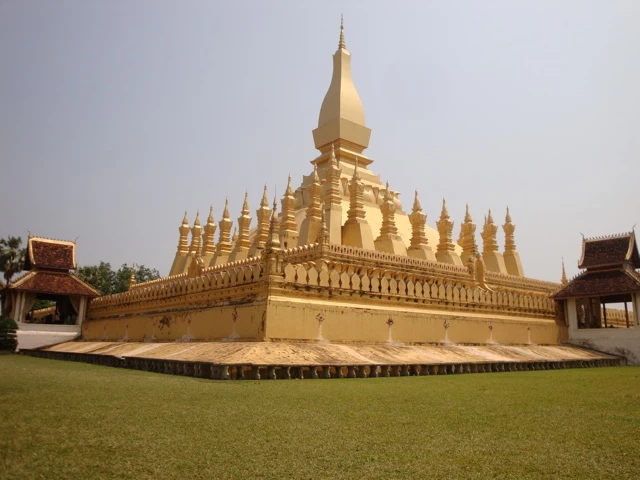

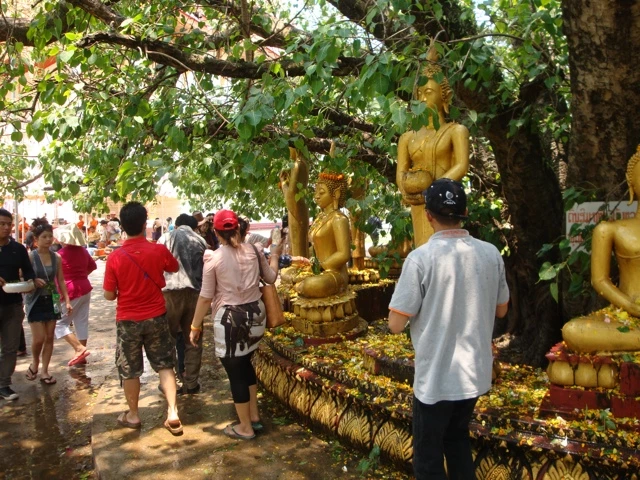
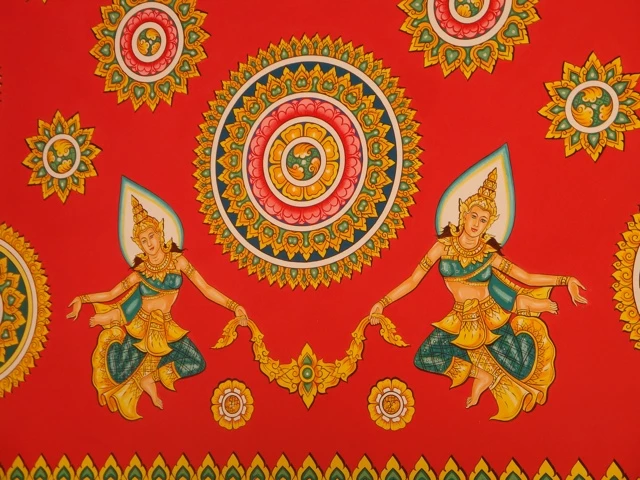
On the way back we visited the Victory Monument Patou Xai. It was in the 1960s as a "monument to the heroes of the royal army", d. H. built for Laos' independence from France (1949). When the Pathet Lao took power in 1975, the huge concrete structure became nameless for 20 years. Generally it was simply known as Anousavali (monument). On the 20th anniversary of the seizure of power in 1995, the triumphal arch received the new dedication "The Heroes of August 23, 1975" (the day of the seizure of power in Vientiane).


After a last, delicious pizza, it was already time to say goodbye.

Many thanks Mom for the great visit! It should be noted that most of the time people thought we were either siblings or a lover. I have to go to the hairdresser again! At six o'clock the next morning I sat in the bus back to Tha Khaek, where Kurd was waiting for me. Through my mother's visit, I had the opportunity to get to know Laos even better with all its diversity. Khop chai lai lai ຂອບ ໃຈ ຫຼາຍໆ ເດີ (thank you very much) Laos! Now it's back to Vietnam. Hopefully I can apply for my China Visa and visit the Nomadbikefamily again ...